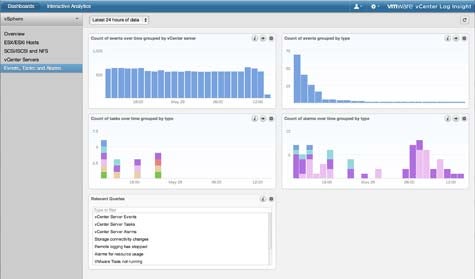Gaining insight into what’s occurring on systems running VMware can be a significant challenge for most IT organizations. IT tends to have separate sets of tools that give visibility into applications and the underlying physical IT infrastructure. But when it comes time to see what’s happening at the virtual machine layer, most are running blind. Worse yet, very few of them can correlate any events across the application, virtual machine and physical infrastructure layers that now make up the data center.
To address that specific set of challenges, VMware today launched VMware vCenter Log Insight, a log management and analytics application that, while optimized for VMware environments, also provides insights into what is happening at the application and physical infrastructure layers of the data center.
According to Martin Klaus, group product-line manager at VMware, without a log management analytics application, IT managers are reduced to collecting massive amounts of machine data that they would have to hire a data scientist to sort through. While there is no shortage of log management tools, Klaus says what distinguishes VMware vCenter Log Insight is the quality of the analytics it puts directly in the hands of the average virtual machine administrator.
Klaus says VMware vCenter Log Insight is designed to support analytics of streaming data that can be analyzed in real time using a just-in-time schema definition that adapts to terabytes of data delivered in any format.
Available now as part of public beta, VMware vCenter Log Insight, Klaus says VMware administrators can also choose to launch VMware vCenter Log Insight from within VMware vCenter Operations in the context for any object or alert to identify the root cause of an IT issue. That information can then be used to either manually address the problem or automatically remediate it using any number of IT automation tools, says Klaus.
Just as importantly, Klaus says VMware vCenter Log Insight is priced at $200 per operating system instance with no log data size limits, which he says compares favorably with other log management tools that charge customers based on the amount of data they collect. The problem with that approach, says Klaus, is that it serves as a disincentive for administrators to try to solve a specific problem if they know the amount of data that needs to be analyzed would make solving the problem cost prohibitive.
Given the fact that no one is sure any more about how many virtual machines the average administrator should be able to effectively manage, it’s clear that virtual data center environments are going to need as many tools as they can get their hands on. What can’t occur, however, is a situation where from a cost perspective the cure winds up being worse than the virtual machine disease.



